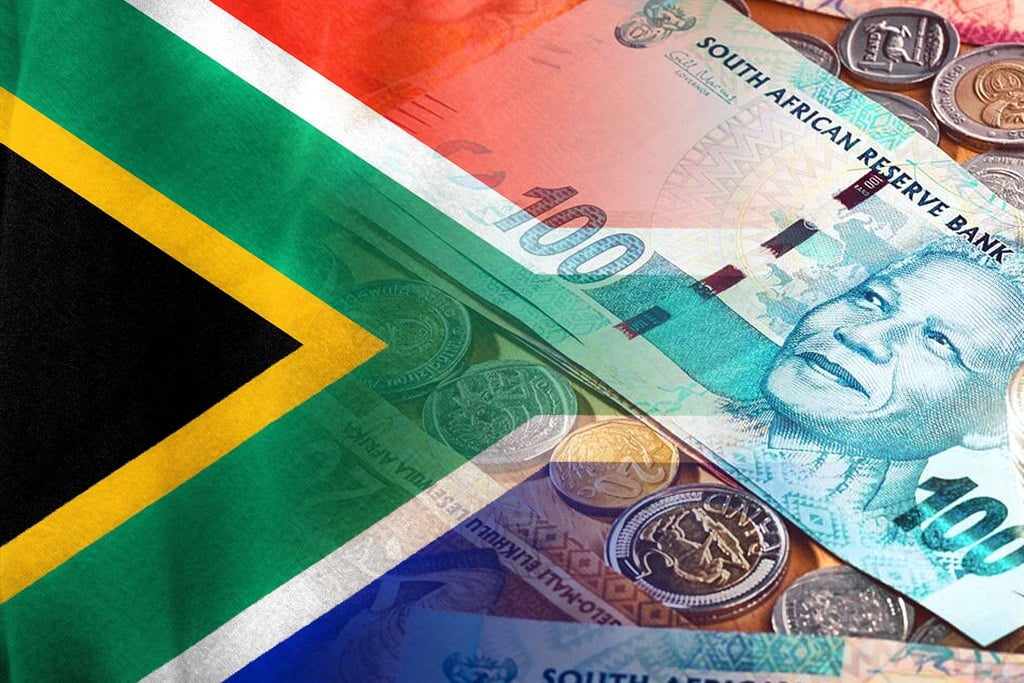(Javier Ghersi/Getty Images)
- South Africa’s economy likely avoided a recession in the second quarter, with improvements in manufacturing, retail, and wholesale trade sales.
- Analysts predict 0.5% GDP growth for second quarter, supported by lower inflation and improved electricity supply.
- Business confidence has risen post-election, with the rand rallying and hopes for economic reforms and investment.
- For more
financial news, go to the News24 Business front page.
South Africa’s economy probably avoided tipping into a recession in the second quarter, handing the country’s new coalition government a much-needed base to build on over the rest of the year.
Stronger readings from manufacturing, retail and wholesale trade sales shows parts of the economy have turned positive that were a drag in the three months through March — when output shrank 0.1% — amid a clear improvement in national electricity supply.
That will aid growth, with analysts polled by Bloomberg predicting a 0.5% gain when second quarter data is published Sept. 3, adding to evidence the country has turned a corner since elections on May 29.
Lower inflation, which data due at 10 a.m. in Johannesburg is expected to show cooled to 4.8% in July from 5.1%, would be another positive clue.
“South Africans opened their wallets a little wider in June amid tentative optimism about the post-election economic outlook,” analysts at Oxford Economics said in a note on Monday, after data last week showed retail sales rose 4.1% in June, compared with a year earlier.
A softer inflation reading would support consumers by boosting spending power and encouraging the central bank to start lowering South Africa’s painfully high interest rates next month.
It would also follow improvements in manufacturing and wholesale trade sales during the second quarter, though mining continued to shrink, albeit by less than it did in the first quarter.
“With load shedding suspended, economic data improved in the second quarter,” analysts at Investec wrote in a note on Tuesday, using the local name for power cuts. “The data indicates a change in direction for gross domestic product from a contraction in the first quarter to an expansion.”
Investors have taken note. The rand has rallied around 5% against the dollar following the election, tuning into the mood as well as higher gold prices and hopes for lower US interest rates.
Business confidence has also improved since post-vote negotiations yielded a broad governing coalition that joined centrist parties with the African National Congress, which lost its parliamentary majority for the first time since coming to power 30 years ago.
That doused fears that the ANC would ally itself with leftist rivals including former President Jacob Zuma’s uMkhonto weSizwe Party and the Economic Freedom Fighters.
The self-styled government of national unity says it will accelerate reforms and investment, supporting growth and job creation in a country blighted by an unemployment rate of more than 33%.
South Africans are cautiously taking the GNU — as it’s locally known — at its word, while waiting for evidence it can deliver.
“There is now an opportunity to put the economy on an upward trajectory that fosters greater business and investor confidence,” the South African Chamber of Commerce said in a 14 August statement.
To be sure, Africa’s most-industrialised economy still faces headwinds. It’s only forecast to expand a meagre 1% in 2024, before picking up to 1.7% next year. But that would still be an achievement after averaging barely 1% for the past decade.
Household spending subtracted 0.2 percentage points from output in the first quarter, so increased consumption that turned a headwind into a tailwind would be helpful. Rate cuts could provide further momentum.
The South African central bank has held its policy benchmark at a 15-year high of 8.25% since July 2023 to thwart inflation. But two of its six policymakers favoured a quarter-point reduction when they met in July, suggesting that a cut will be debated when officials gather on 19 September.
“We’re moving in the right direction,” said Elna Moolman, Standard Bank’s head of South Africa macroeconomic research. “From a consumer perspective, we think that the outlook for the retail sales in the second half of the year is even stronger.”
South African manufacturing is another piece of the puzzle that points toward a rebound, growing 0.9% in the second quarter, compared with a 1.4% decline in the previous three months. Wholesale trade sales also rose 0.9% over the period. But mining shrank by 0.9%, after declining by 2.3% in the first three months.
Jee-A van der Linde, senior economist at Oxford Economics, said that the poor mining result would probably offset the positive momentum delivered by a significant improvement in power supply.
Eskom performing
State-owned utility Eskom hasn’t imposed scheduled power cuts since late March after many months when they were an almost daily occurrence.
“Our base case is for real GDP to expand by 0.8% in 2024, and with economic growth forecast to reach 1.6% next year due to improved post-election growth prospects,” said Van der Linde.
Eskom’s shortcomings and logistical snarl-ups at the nation’s ports and railways have handicapped the South African economy for years.
Hope that Eskom can keep the lights on and that freight-rail operations improve at troubled state transport firm Transnet is another reason for cautious optimism for the second half of the year and 2025.
“We think that we have a bit more confidence now that the election is behind us,” Moolman said. “We’ve seen positive signals. There’s more and more in the reform process” that communicates to investors that “it’s worth making the investment.”
